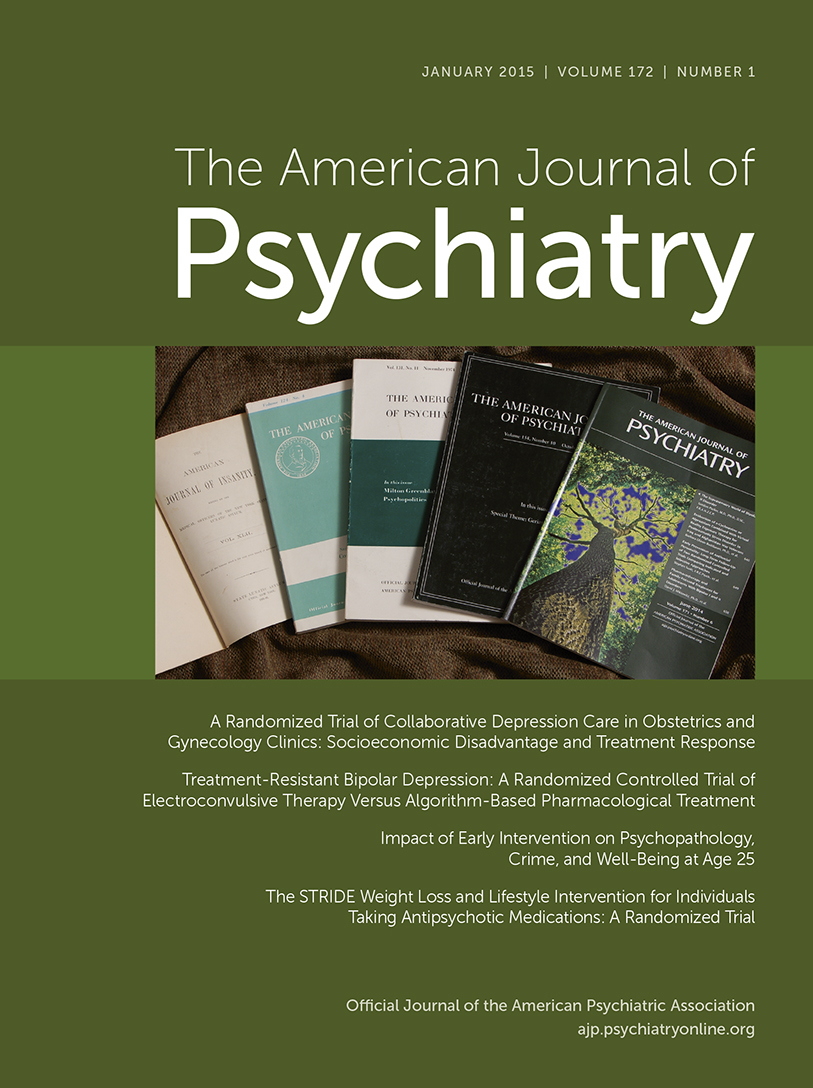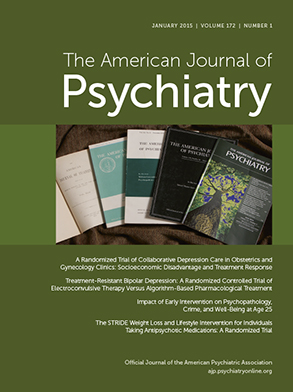Early-onset conduct problems are multidetermined and influenced by neighborhood, peer and classroom ecology, poverty, parenting practices, social-cognitive and academic skills, and temperament (
1). Without intervention, many youths with early-onset conduct problems are at greatly increased risk for continued antisocial behavior, other psychiatric disorders, substance abuse, incarceration, impaired interpersonal functioning, and poor educational and occupational attainment. Consequently, these youths incur enormous societal costs as a result of their criminal behavior and lack of economic productivity (
2,
3).
At the time that the Fast Track prevention program was developed, there were no well-established interventions for youths with early-onset conduct problems that showed enduring effects. The goal of Fast Track was to attenuate the trajectory of disruptive behavior and associated sequelae, namely substance abuse, risky sexual behavior, criminal involvement, and unemployment. In light of the multidetermined pathways to delinquency, the Fast Track program chose to test a set of high-intensity multimodal interventions that simultaneously addressed multiple risk and protective factors to prevent conduct problems and related sequelae (
4).
In Fast Track, kindergarten children who were assessed by their teachers and parents to have conduct problems were randomly assigned by classroom to either Fast Track or usual care. During grades 1–5, children in the Fast Track intervention and their families attended social skills and parent-training groups and received additional in- and out-of-classroom educational and social support to promote academic and social competence. Additionally, home visits were provided to help parents hone and maintain their parenting skills. In middle school and high school, groups of youths were offered instruction on adolescent development, drug and alcohol use, and life and vocational goals. Families also received individualized interventions that targeted multiple domains.
In this issue of the
Journal, outcomes at age 25, some 10 years after the end of the intervention, are reported by Dodge et al. (
4). Impressively, youths assigned to Fast Track, compared with control subjects, were less likely to have any externalizing, internalizing, or substance use disorder (59% compared with 69%). Youths involved in Fast Track had lower rates of antisocial personality disorder, alcohol and substance abuse, and risky sexual behavior, as well as lower rates of violent crime and substance abuse convictions. When the youths, especially males, who received Fast Track became parents, they resorted to spanking less frequently. The positive effects of the study intervention were seen regardless of race, gender, and risk stratification. However, there were no effects on convictions for property crime (the most common of all forms of delinquency) and on educational and occupational outcomes. Nevertheless, this investigative team is to be congratulated for taking on the treatment of such a difficult population, retaining the sample in a complex treatment and in follow-up for many years, and for persisting in the correct belief that conduct problems are amenable to intervention.
One of the limitations raised by the authors is that it is not possible to identify the active ingredients in the intervention, nor whether a lower dose of a particular type of intervention would be as likely to produce positive results. In addition to these limitations, the high cost, around $58,000 per participant, is a significant barrier to replication or dissemination. These outcomes await formal cost-benefit analyses, but previous analyses at earlier endpoints indicated that Fast Track was cost-effective only for those participants in the top 10th percentile for conduct problems (
5).
There is a tension in the prevention literature between indicated and universal prevention of conduct problems. Those who argue for indicated prevention point out that a small number of chronic offenders account for a large proportion of crime-related costs (
2). However, because around one-half of 5-year-olds with conduct problems usually desist and many costly offenders have an adolescent onset, it is not clear that intervening with disruptive 5-year-olds is the best single strategy for reducing the population burden of criminal behavior (
2,
6). In contrast, some prevention scientists have posited that universal prevention programs may be a more cost-efficient way to reduce crime and substance abuse, since young children with conduct problems often desist, youths at moderate risk will also develop these outcomes, and the risk factors and outcomes in question are of high prevalence (
1,
6–
8).
In recognition of the tension between universal and indicated prevention, some criminologists have recommended a national centralized crime prevention agency that would oversee and maintain a portfolio of evidence-based prevention programs balanced between “developmental” and “situational” crime prevention (
9). Other prevention scientists, perhaps recognizing the resistance in American political culture to top-down centralized control, have advocated for local community-based planning that helps communities to match evidence-based prevention programs to local risk-profiles, needs, and existing strengths (
7,
10). In such a proposed continuum of prevention services, there may be a place for intensive interventions such as Fast Track, which should be targeted toward those youths who, without such expensive interventions, are highly likely to become chronic offenders. One possible subgroup that has emerged are those with callous-unemotional traits, for whom traditional interventions are less likely to be effective (
11). If the Fast Track team could reclassify their sample on the basis of these and related predictors of chronic offending, it might be possible to identify subgroups for whom this intervention would indeed be cost-efficacious.
In the two decades since Fast Track began, several other cost-effective interventions have emerged that have enduring effects on criminality and employment (see
Table 1). The Nurse Family Partnership, referenced by the authors of these Fast Track intervention outcomes, targets low-income mothers and children aged 0–2, with demonstrated long-lasting benefits on crime and employment for both mothers and their children (
12). The Good Behavior Game, a classroom-based program directed toward first-graders in poor neighborhoods, has also shown enduring effects on criminality, substance involvement, and occupational and educational achievement (
13,
14). For those youths who already show criminal involvement, multisystemic therapy can have sustained effects into adulthood on these youths and their nonadjudicated siblings (
15). Although these programs cannot be directly compared with Fast Track because each targeted a different problem at a different age, each of them has demonstrated long-term effects and a favorable return on investment at a fraction of the cost of Fast Track (
Table 1).
The take-home message of the Fast Track study is that early conduct problems can be treated and antisocial disorder can be prevented with long-term enduring effects. Outcome is important, but cost also matters. For this reason, interventions based on similar principles to Fast Track, but that are less costly and easier to implement, are likely to be the interventions that clinicians and prevention scientists more frequently deploy to prevent criminality and promote occupational and social competence. Given the high personal and societal costs of crime, there may be subgroups for whom the intensity and duration of Fast Track are indeed cost-beneficial. The extant literature supports the importance of investing in an intervention portfolio that is balanced by age and risk status as a cost-effective means of preventing detention and incarceration (
8,
9).
Acknowledgments
The authors thank J. David Hawkins, Ph.D., and Joseph Park, M.A.

